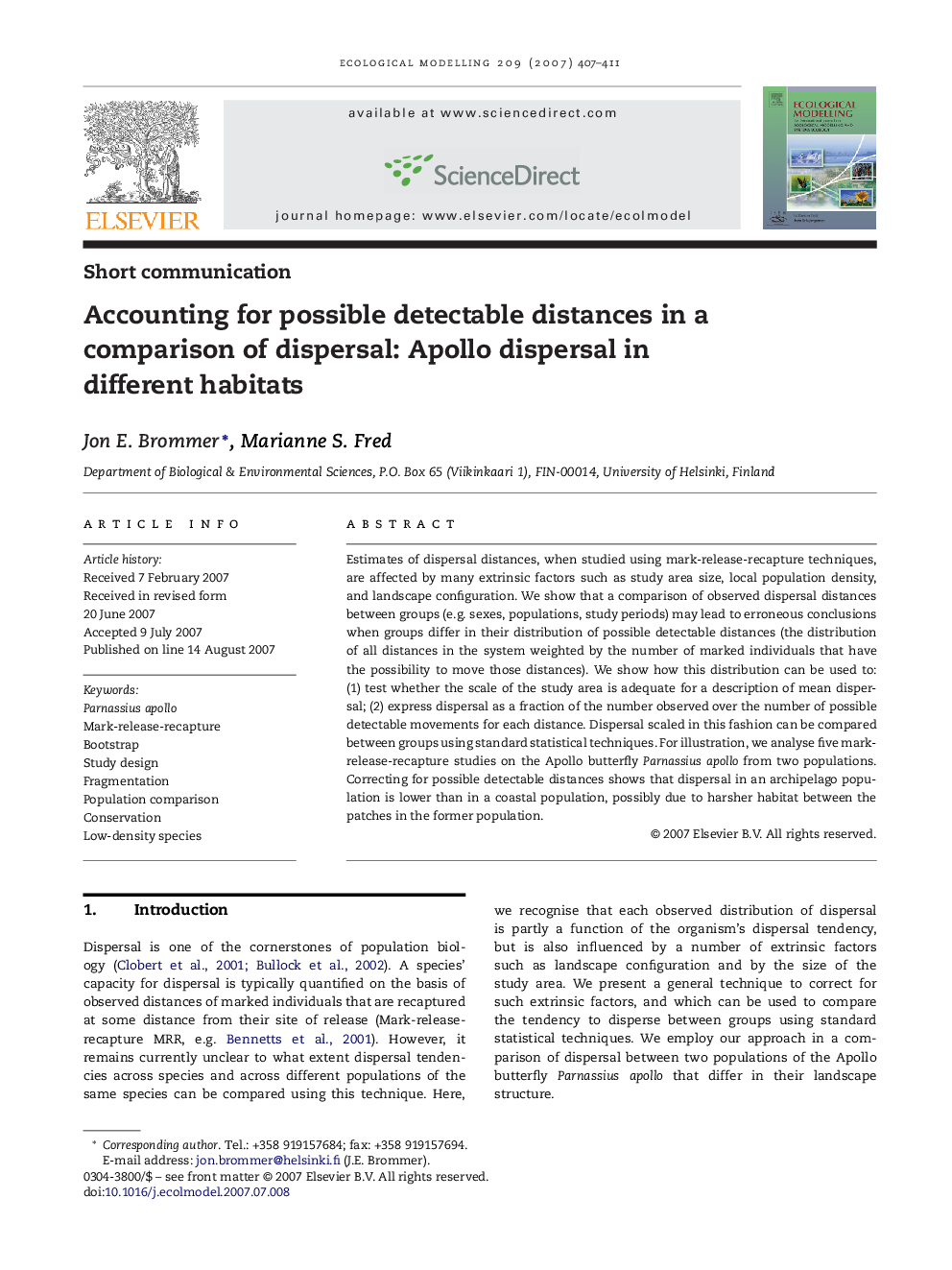| Article ID | Journal | Published Year | Pages | File Type |
|---|---|---|---|---|
| 4378539 | Ecological Modelling | 2007 | 5 Pages |
Estimates of dispersal distances, when studied using mark-release-recapture techniques, are affected by many extrinsic factors such as study area size, local population density, and landscape configuration. We show that a comparison of observed dispersal distances between groups (e.g. sexes, populations, study periods) may lead to erroneous conclusions when groups differ in their distribution of possible detectable distances (the distribution of all distances in the system weighted by the number of marked individuals that have the possibility to move those distances). We show how this distribution can be used to: (1) test whether the scale of the study area is adequate for a description of mean dispersal; (2) express dispersal as a fraction of the number observed over the number of possible detectable movements for each distance. Dispersal scaled in this fashion can be compared between groups using standard statistical techniques. For illustration, we analyse five mark-release-recapture studies on the Apollo butterfly Parnassius apollo from two populations. Correcting for possible detectable distances shows that dispersal in an archipelago population is lower than in a coastal population, possibly due to harsher habitat between the patches in the former population.
